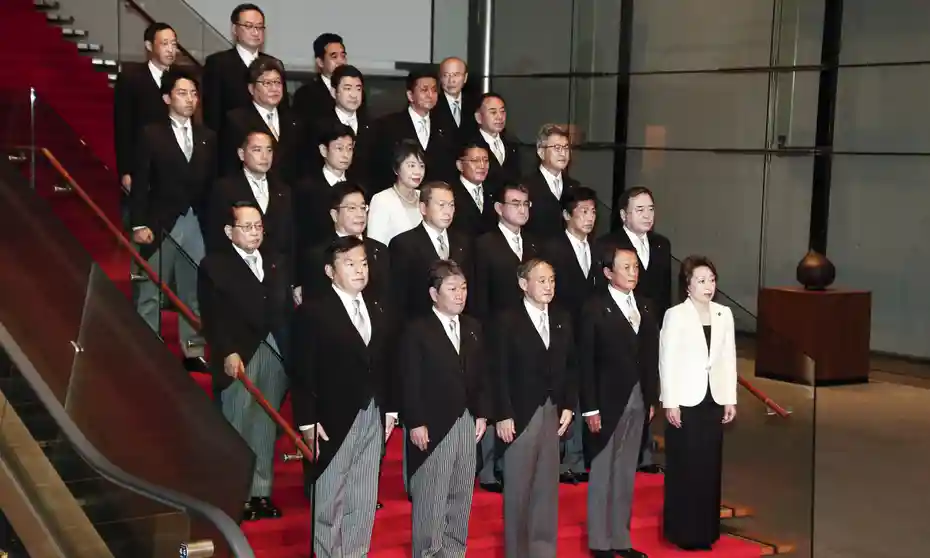 Culture
Culture
Japan’s Gender Gap Index Shows High Inequality
By Honoka Karikomi

Through the Tokyo Olympics in 1964 and a period of rapid economic growth, Japan has grown to become the third largest economy in the world by GDP. Thanks to its thunderous automobile and electronics industries and bold economic reforms of the 1960s, its global position has risen considerably since the immediate post-war period.
However, there is an area which Japan still lags behind in compared to the Western world: the Gender Gap. According to the World Economic Forum, in 2021 Japan’s Gender Gap Index (GGI), which measures the levels of equality between men and women in a country, ranked 120th out of 156 countries. In this article, we will delve into the current situation of gender inequality in Japan, and how this is affecting Japanese businesses.
Japan’s Gender Gap
It is still new to memory that the former executive officer of Yoshinoya, an industry-leading beef bowl chain, has been dismissed due to his sexist remarks about a marketing strategy aiming to get young women “hooked” on its products as though turning “virgins into drug addicts”. Similarly, former Japanese Prime Minster and Chief of the Tokyo Olympics Yoshirou Mori, who served as Prime Minister of Japan in the early 2000s and former Chief of the Tokyo Olympics, resigned from his post for commenting that women caused meetings to run on by talking too much.
Incidents such as these beg the question: why did these powerful men think it permissible to make these comments? The answer lies largely in Japan’s continued status as a male-dominant society. While it has been almost 40 years since the promulgation of the Equal Employment Opportunity Law in Japan, the reality is that men tend to have much higher salaries, and carry higher positions in companies when compared to women who have worked for the same length of time.
It is still not uncommon for women to be passed over promotions or to have their voices disregarded simply because they are women. The pervasiveness of gender inequality in Japan is seen further when we consider that men account for 90% of Japanese Parliament members, with an the average age of 55. While Japanese women still feel their voices stifled, more are feeling empowered to publicly take a stand against workplace sexism and other forms of unfair treatment, as shown in the 2019 rise of the #kutoo movement in Japan.

Gender-related discrimination including gender based employment bias is not limited to the Parliament and companies, but also extends to educational opportunities. It has been revealed that from around 2010 to 2018, Tokyo Medical University uniformly deducted points from female applicants to reduce the number of successful candidates in the general entrance examination for the school’s medical department.
At the time, local media reported that this was done partly because they thought women would leave the workplace, or work fewer hours after getting married and having children. Similarly, Juntendo University in Tokyo imposed stricter requirements on female students for being better at communicating than men, which is an advantage in interviews.
The Impact of Japanese Culture
These cases are without a doubt influenced by Japan’s conservative culture that can be hesitant to adapt to new ways. Before the Second World War, it was considered normal and taken for granted that women would give birth to more than 3 children and look after them in addition to housework while their husbands were at work. Therefore, it was deemed that men had absolute power to control the family, and that wives were not allowed to talk back to their husbands.
This culture is called Kanpakuteishu (governing dominant husband) and was common until 30 years ago, forming one of the building blocks of Japan’s gender gap. Although people’s values have changed since then, it can still be hard for women to live their lives against the traditional grain.

Indeed, many women give up on their careers to look after their children, as it is still not common for men to take paternity leave (only after 2020 did the percentage of men who take paternity leave exceed 10%). The number of full-time househusbands has been increasing, but it is a difficult decision to make in Japan’s conservative culture. As these examples show, Japanese society is lagging behind in adapting to the “new normal” where women can be active in the public sphere.
Shifting Perceptions in the Younger Generation
While many people in older age groups often take gender role stereotypes and power imbalances for granted, members of Japan’s younger generations are trying to eliminate such discriminatory attitudes among both men and women. A survey by the Japanese Cabinet Office on the division of housework showed that husbands’ share of housework and childcare was very low, with both genders reporting a higher proportion of respondents of higher age. A separate report in 2021 showed that only 20% of men aged 60 and over actively participated in housework, in stark contrast to approximately more than half of men aged 29 and under who did so.

As these statistics show, young people, especially the Satori generation (Japan’s Gen-Z), tend to be less bound by stereotypes and more concerned with their own beliefs. They express a tendency to question the Japanese conservative mindset that extends past issues of gender inequality, also to the Japanese working environment in which overtime is considered a virtue, and the conservative Japanese view that married couples are forced to share the same surname, showing a willingness to act spontaneously to improve the situation, being a force for positive change in Japan’s gender gap.
Ultimately, Japan’s Gender Gap Index score reflects the continued prevalence of mid-20th century attitudes towards women and their positions in the public and private spheres. While positive change is occurring, Japanese women still struggle to make their voices heard and find equal representation and reward in a continuedly male-dominated conservative society. These attitudes are showing signs of breaking with generations of more open minded, individualistic young people making their impact on Japanese society.
Want to read more about Satori Generation? Click here
Need help with translating your website or credentials into Japanese? Contact Tokyoesque.
Keep checking back or follow us on LinkedIn to get notified about our latest posts. We’ll be adding more articles on technology developments and various sectors in Japan, so watch this space!




